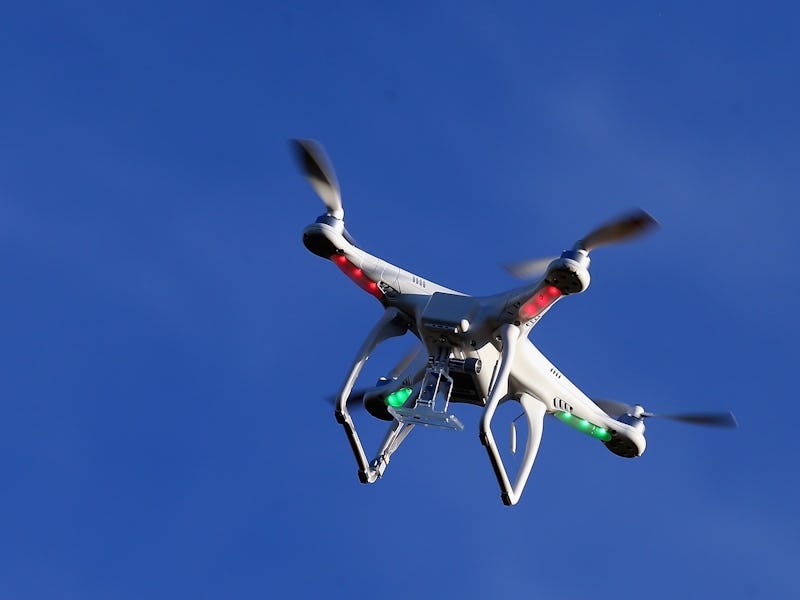Will It Ever Be OK to Shoot Down a Self-Piloting Drone?
Can autonomous drones trespass?

When it comes to shooting down your neighbor’s drones, the current consensus is that it’s just not cool. Good fences may make good neighbors, but good shotguns, or radar shotguns, don’t. Also, it’s illegal. Drones are aircraft and damaging aircraft is a federal crime punishable by hefty fines and up to two decades in jail. William Merideth (aka, apparently, the Drone Slayer) may have caused some legal turmoil when he hit a drone he believed was being used to invade his privacy with buckshot. Or he might not have. The laws surrounding drones wandering onto private property are clearly in flux.
A key part of the Merideth case was that witnesses saw the drone, which was operated by a man named David Boggs, fly below the tree line, which indicated motive: privacy invasion. These reports gave Kentucky judge Rebecca Ward air cover to throw out the case. “He had a right to shoot at this drone, and I’m gonna dismiss this charge,” she told her court. Merideth heralded the decision as critical, but in an age of increased automation, it might not be. What if it was Boggs’s drone, but he wasn’t flying it? What if no one was?
First things first: Self-flying drones aren’t a mass-market thing. Drones need operators, be it a solo person on the ground or a 150-strong maintenance team, as it is in the case of combat Predator drones. There have, however, been promising initial advances in the autonomous UAV field, as MIT recently demonstrated with a drone that blazed around branches at 30 mph.
So what happens when a drone blazes itself through the trees in your yard — perhaps because it’s a wayward Amazon delivery drone from the future. Do you have any recourse to pop it out of the sky? (Again, please don’t fire guns into the air!) University of Miami law professor A. Michael Froomkin has argued that because you don’t always know what’s going on with a drone (people have, in very few cases, stuck Tasers and other weapons to UAVs), you could, theoretically, be correct in perceiving drones as a threat. Threatened people are legally allowed to protect themselves. Froomkin and his colleague Zak Colangelo, in a 2014 legal paper, propose ways to curb would-be drone slayers from pulling the trigger by putting everybody on the same page regarding drones:
“We therefore suggest measures to reduce those uncertainties, including forbidding weaponized robots, requiring lights and other markings that would announce a robot’s capabilities, creating a legal presumption that trespassing drones are dangerous to privacy if they do not bear visible indicia of harmlessness, requiring drone operators to file flight plans if they plan to overfly private property or even public property in urban areas, and mandating serial numbers that would uniquely identify the robot’s owner.”
Froomkin and Colangelo argue that such identifiers would help strike a balance by relieving people’s anxiety about drones while deterring those unusually predisposed to shooting things out of the sky: A system of lights, say, will help observers quickly conclude what sort of drone they’re looking at, be it flashing red and blue for cop drones or a solid blue for drones sans cameras.
Of course, you could raise the argument that people flying their drones for nefarious purposes would camouflage or otherwise disguise machines by slapping a blue light on a surveillance drone, then sending it on its merry way. But then, a drone with a bright blue light that is acting in a suspicious or threatening manner might be an easier target.